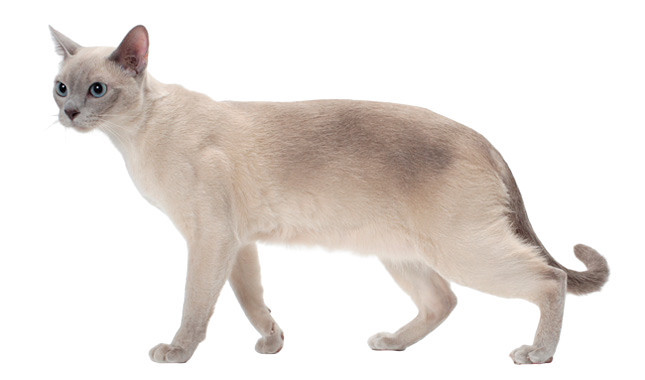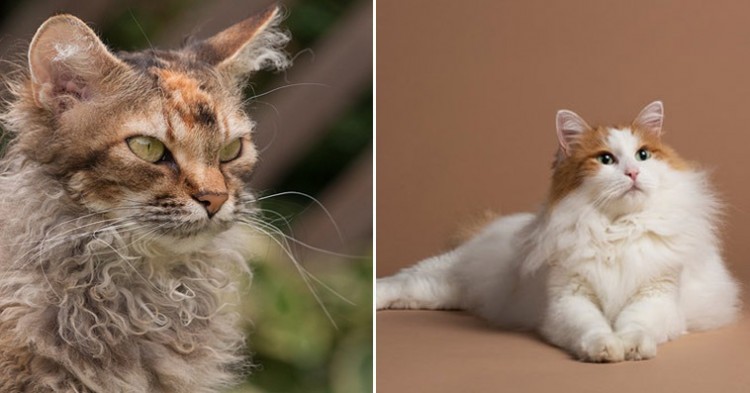
Tonkinese
USD $600 - $1000 Price Avg.
Small, Medium
Size
Yes
Lap Cat
14 to 16 years
Lifespan
Breed Information
| Popularity/Rank | 20 |
|---|---|
| Name | Tonkinese |
| Other names | Tonk |
| Origin | Canada |
| Size | Small, Medium |
| Coat | Plush, Silky, Soft, Medium-short |
| Lap Cat | Yes |
| Lifespan | 14 to 16 years |
| Temperament |
Affectionate, Intelligent, Lively, Outgoing, Playful, Social, Curious 1. Affectionate: The Tonkinese cat breed is an affectionate cat that loves to be around people. They are intelligent and lively cats that enjoy playing and socializing with others. They are also curious by nature and love to explore their surroundings. 2. Intelligent: The Tonkinese cat breed is an intelligent cat that is quick to learn new things. They are also playful and outgoing, making them great companions for people of all ages. They are curious by nature and love to explore their surroundings, which can sometimes lead them into trouble! 3. Lively: The Tonkinese cat breed is a lively cat that loves to play and socialize with others. They are also intelligent and curious by nature, which can sometimes lead them into trouble! They are outgoing and affectionate cats that make great companions for people of all ages. 4. Outgoing: The Tonkinese cat breed is an outgoing cat that loves to socialize with others. They are also affectionate and playful, making them great companions for people of all ages. They are curious by nature and love to explore their surroundings, which can sometimes lead them into trouble! 5. Playful: The Tonkinese cat breed is a playful cat that loves to play with toys and other cats. They are also affectionate and outgoing, making them great companions for people of all ages. They are curious by nature and love to explore their surroundings, which can sometimes lead them into trouble! 6. Social: The Tonkinese cat breed is a social cat that loves to be around people. They are also affectionate and playful, making them great companions for people of all ages. They are curious by nature and love to explore their surroundings, which can sometimes lead them into trouble! |
| Weight | Female: 6 - 8 pounds, Male: 8 - 12 pounds |
| Colors | Cream, Fawn, Silver, Blue |
| Kitten Prices |
USD $600 - $1000
When it comes to Tonkinese kitten prices, there are a few things you need to take into consideration. For starters, the price of a Tonkinese kitten can range anywhere from $600 to $1000 USD. This price range will depend on the breeder you choose to purchase your kitten from, as well as their reputation. Additionally, the price of a Tonkinese kitten can be impacted by the quality of the parents. If you are looking for a high-quality Tonkinese kitten, you can expect to pay more money. However, if you are simply looking for a pet-quality kitten, you may be able to find one for less money. Ultimately, it is up to you to decide how much money you are willing to spend on a Tonkinese kitten. If you have your heart set on owning one of these beautiful creatures, then be prepared to pay a bit more money than you would for a traditional domestic cat. |
Breed Characteristics
| Adaptability | |
|---|---|
| Affection Level | |
| Child Friendly | |
| Dog Friendly | |
| Energy Level | |
| Grooming | |
| Health Issues |
cardiomyopathy, amyloidosis, renal failure, gingivitis, stomatitis, pyothorax, urethral blockage, respiratory disease, deafness, and ocular disease. Is Tonkinese cat Hypoallergenic? There is no definitive answer to this question as each individual's allergies are unique. However, many people who are allergic to cats find that they can tolerate Tonkinese cats better than other breeds. This may be due to the fact that Tonkinese cats produce less of the protein that is responsible for triggering allergies in some people. If you are considering adopting a Tonkinese cat and are allergic to cats, it is recommended that you spend some time around one to see if you have a reaction before making a commitment. 1. Cardiomyopathy Cardiomyopathy is a disease of the heart muscle. It can be inherited, or it can be caused by other factors such as high blood pressure or diabetes. Cardiomyopathy can lead to heart failure, and it is a leading cause of death in cats. 2. Amyloidosis Amyloidosis is a disease in which abnormal proteins called amyloids build up in the body's tissues and organs. Amyloidosis can affect many different organs, but it most commonly affects the liver, kidneys, and heart. 3. Renal Failure Renal failure is a condition in which the kidneys are unable to filter waste products from the blood. Renal failure can be acute (sudden) or chronic (long-term). It can lead to kidney failure and death. 4. Gingivitis Gingivitis is a condition in which the gums become inflamed. Gingivitis is the early stage of periodontal disease, and it can lead to tooth loss. 5. Stomatitis Stomatitis is a condition in which the mouth becomes inflamed. Stomatitis can be caused by a number of different things, including viruses, bacteria, allergies, and autoimmune diseases. Stomatitis can lead to mouth ulcers, pain, and difficulty eating. 6. Pyothorax Pyothorax is a condition in which pus accumulates in the chest cavity. Pyothorax can be caused by infections, tumors, or injuries. It can lead to difficulty breathing and even death. 7. Urethral Blockage Urethral blockage is a condition in which the urethra becomes blocked. Urethral blockage can be caused by infections, tumors, or injuries. It can lead to difficulty urinating and even death. 8. Respiratory Disease Respiratory disease is a condition in which the lungs are unable to function properly. Respiratory disease can be caused by infections, allergies, or environmental factors. It can lead to difficulty breathing and even death. 9. Deafness Deafness is a condition in which the ears are unable to hear. Deafness can be caused by a number of different things, including infections, injuries, and birth defects. Deafness can lead to difficulty communicating and even isolation. 10. Ocular Disease Ocular disease is a condition in which the eyes are affected. Ocular disease can be caused by a number of different things, including infections, injuries, and birth defects. Ocular disease can lead to blindness and even death. |
| Intelligence | |
| Shedding | |
| Social Needs | |
| Stranger Friendly | |
| Vocalization | |
| Health Care |
Tonkinese cats are a healthy breed, but like all cats, they require proper care to stay in tip-top shape. Here are some tips for keeping your Tonkinese cat healthy:
1. Feed them a high-quality diet. Tonkinese cats are active and need a diet that provides them with plenty of energy. Look for a food that is high in protein and fat and low in carbohydrates. 2. Keep them active. Tonkinese cats love to play and run around, so make sure you provide them with plenty of toys and space to do so. A bored Tonkinese cat can become overweight and lazy, so keep them active to avoid health problems down the road. 3. Keep their litter box clean. Tonkinese cats are fastidious about their bathroom habits and will avoid using a dirty litter box. scoop it out daily and change it completely every week to keep your cat happy and healthy. 4. Brush their fur regularly. Tonkinese cats have beautiful, silky fur that can get tangled easily. Brush it regularly to prevent mats and keep their coat looking its best. 5. Take them to the vet regularly. Even healthy cats need to see the vet for routine check-ups and vaccinations. Make sure you take your Tonkinese cat to the vet at least once a year for a check-up, and more often if they have any health concerns. |
History
The Tonkinese is a cat breed that originated in Southeast Asia. It is a cross between the Burmese and the Siamese, and was first bred in Thailand. The Tonkinese was once known as the "Royal Cat of Siam" and was prized for its intelligence and beauty. However, the breed nearly became extinct during World War II, when many of the cats were killed or sold to other countries. The Tonkinese eventually made a comeback in the 1950s, when it was recognized as a distinct breed by cat fanciers in North America and Europe. Today, the Tonkinese is one of the most popular cat breeds in the world.
The Tonkinese is thought to be descended from two ancient Asian cat breeds: the Burmese and the Siamese. The first recorded mention of the Tonkinese was in 1884, when British diplomat Edward Blencowe Gould wrote about "a new kind of Siamese" that he had seen in Bangkok, Thailand. These cats were likely created by accident, as they were not originally bred to be a new breed. However, they quickly became popular among royalty and nobles in Siam (now Thailand). The cats were given the name "Tonkanese", after the port city of Tonkin (now Hanoi), Vietnam, from which they were exported.
During World War II, many Tonkinese cats were killed or sold to other countries as pets. This led to a decline in numbers, and by the 1950s there were very few left in existence. In 1957, two American cat fanciers - Virginia Cobb and Joan O'Shea - decided to try to save the breed from extinction. They began breedingTonkinese cats with Siamese and Burmese cats, and eventually created a new generation of healthy kittens. In 1971,the Cat Fanciers' Association (CFA) officially recognized the Tonkinese as a distinct breed.
Today, there are three main types of Tonkinese: Traditional (or "Old-Style"), Modern ("Mink"),and Solid ("Burmilla"). The Traditional type is closest to the original form ofthe breed; it has a medium-sized body with long legs and tail, large ears,and almond-shaped eyes that come in blue, green or gold colors. The Moderntype is larger than the Traditional type; it has a more muscular build withshorter legs and tail , small ears ,and round eyes that come in blue ,aqua or green colors .The Solid type is similar tothe Traditional type but has darker fur; it comesin brown , chocolate ,cinnamon , fawn or seal point colors . All three typesof Tonkinese are intelligent , affectionate , playful cats that make greatpets .
Description
The Tonkinese cat is a medium-sized, short-haired cat that is a cross between the Siamese and Burmese breeds. The coat is usually brown, blue, or lilac in color, and the eyes are almond-shaped and blue. Tonkinese cats are known for their outgoing personalities and their love of people. They are also very active cats and enjoy playing games.
Tonkinese cats typically weigh between 8 and 12 pounds and have a lifespan of 10 to 15 years. They are generally good with other animals, including dogs and children, but may be more reserved around strangers. Tonkinese cats are also known for being very vocal, which some people find endearing while others may find it annoying.
Health-wise, Tonkinese cats are generally healthy but may be prone to certain health conditions such as respiratory problems, heart disease, kidney disease, and obesity. It is important to keep your Tonkinese cat at a healthy weight to help prevent these health problems.
When it comes to adaptability, Tonkinese cats do well in most environments but may prefer a home with plenty of space to run and play. They are also relatively easy to care for thanks to their short coats which only require occasional brushing. Overall, Tonkinese cats make great pets for those looking for an active and affectionate companion.




